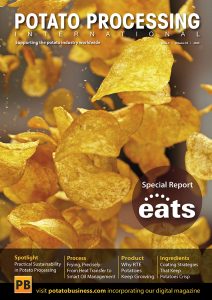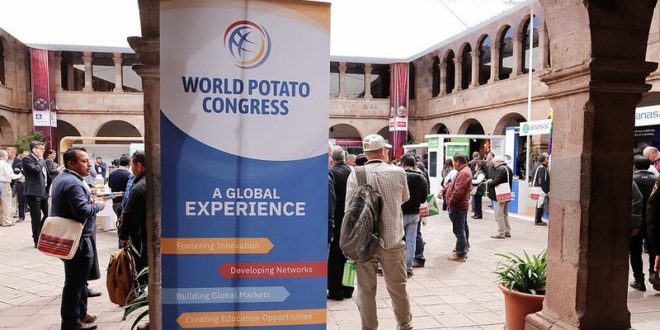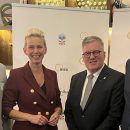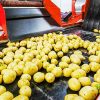International Chefs Explore Idaho’s Potato Research at U of I Parma Laboratory
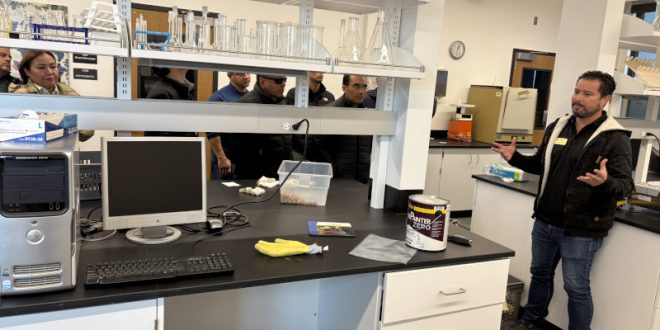
Thirty-one chefs from across the globe recently toured the University of Idaho’s new Idaho Center for Plant and Soil Health in Parma, gaining first-hand insight into the scientific innovation that underpins the renowned quality of Idaho potatoes.
The chefs — many responsible for menu development at major international restaurant chains — visited the year-old, 9,600-square-foot facility as part of a reverse trade mission organized by Potatoes USA, the national marketing and promotion board for U.S. potatoes. Participants were selected based on their current use of U.S. potato products and their potential to expand purchases in their respective markets.
“The work being done in Parma reflects the U.S. potato industry’s commitment to science-based programs, ensuring U.S. potatoes remain the global standard for consistency and excellence,” said Marisa Stein, global marketing director at Potatoes USA.
The week-long program showcased the full U.S. potato supply chain, from field to finished product. Alongside their stop at the Parma research center, chefs visited Idaho potato farms, frozen potato processing plants, and facilities dedicated to snack food and R&D. The mission concluded in Chicago, where participants experimented with U.S. potato products and created new culinary concepts.
Among the visitors was Domingo De Obaldia, owner of several restaurants in Panama, including five Doxi’s Chicken Fingers locations. De Obaldia described his experience aboard a potato harvester as “incredible,” adding that the research presented at the university confirmed his confidence in the product quality.
“Coming here and seeing all the studies they do to make Idaho potatoes as world-renowned as they are in terms of quality, production, yields and all of that — it’s incredible,” he said. “As far as the research goes, this helps me solidify the knowledge that the product I use in my restaurant is top quality and it’s been studied and investigated and made specifically to be what I need it to be.”
According to James Woodhall, UI Extension specialist of plant pathology who organized the Parma tour, the visit provided a unique opportunity to demonstrate the university’s state-of-the-art facilities and the scientific foundation supporting the U.S. potato sector.
“The new facility is one of the best facilities in the western U.S.,” Woodhall said. “It’s good to show we’re working in a quality, cutting-edge environment. If we have the right environment to do the work, then we’ll also have the quality, cutting-edge research and provide that information to our stakeholders.”
The Parma faculty highlighted key research areas including potato variety development, pest management, storage physiology, and disease prevention — with a focus on predictive models and diagnostics that help farmers mitigate risks before infections occur.
Emeritus professor Mike Thornton, who specialized in potato and onion agronomy, provided historical context for the Parma Research and Extension Center, founded in 1925 to address issues affecting alfalfa seed production.
“We’re known worldwide for our seed crop production,” Thornton said. “We’re No. 1 in sweet corn, alfalfa seed, carrot seed and onion seed production. If producers in your country plant those crops, there’s a good chance they are planting seed from Idaho.”
Potatoes USA’s reverse trade missions, funded by the USDA Market Access Program and supported by a 10% contribution from Potatoes USA, alternate annually between inviting international chefs and global importers or distributors. Approximately 20% of U.S. potatoes are exported each year, and these missions have helped expand international demand.
Past participants have notably increased their sourcing of U.S. potato products: Grupo Barrio in Nicaragua grew its purchases by 50%, while the Philippines-based fast-casual chain L.A. Chicks began sourcing fries valued at around USD 17,000 annually.
“This is a monumental experience for these chefs,” Stein added. “They’ll go back and remember this experience for years to come, and they’ll talk about it.”



